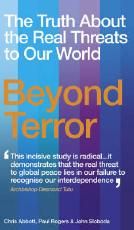Dear Lifeboat Readers,
I am a member of the Neuroscience Scientific Advisory Board at the Lifeboat Foundation and have recently posted to the BioPreserver Program page (please read the page replicated below).
I would like to initiate a conversation about expending more effort on preserving other species and their habitats. We are all understandably concerned about humanity’s survival and the Lifeboat Foundation is a testament to the numerous technologically advanced ways we can ensure our species’ survival in the future. However, I would like to hear from others who may be concerned that in our focus on our own survival we may not be doing enough for the myriad of other species with whom we share the planet. I would argue that there is less attention paid to the survival of our species’ moral integrity than there ought to be. Would it speak well of our species if we survived while everyone else (other species) disappeared? To put it bluntly, in the future, after having escaped numerous threats to survival, will we be able to look in the mirror as a species and like what we see?
For instance, with the current rate of losses, our closest living relatives, the chimpanzees, will be extinct in the wild in 50 years. The causes are indisputably anthropogenic. If we let this happen, what will it do to the morale and the psychological fiber of our species? The question of survival is not only a question of physical and psychological survival, but also survival of our integrity.
And while efforts to preserve the DNA of threatened species are laudable and important, they should not lull us into complacency about the future for other species.
With this said, I would like to propose discussing ways that the Lifeboat Foundation can apply more of its resources and talents to ensuring that there is enough room in the lifeboat for the other “nations of species” with whom we share the planet.
I look forward to your comments and ideas. Thank you, Lori Marino
BIOPRESERVER PAGE
We are currently in the midst of the sixth great mass extinction event in our planet’s history. The die-off of species is occurring at 100 to 1000 times the natural background rate and is largely due to human activities. At the current rate of die-off 1 in 4 mammals (and numerous other animal groups) will be gone in thirty years. All life forms, and especially animals, are complex organisms that thrive in a highly intricate dynamic milieu with each other and the planet’s ecosystems and this situation may limit our ability to respond once species do meet extinction.
Therefore, we also support efforts to preserve and protect the continued existence of endangered animals before they reach the endpoint of extinction. This is a critical component to BioPreserver and an important parallel effort to The Frozen Ark Project by the University of Nottingham, Natural History Museum, Zoological Society of London, and others to collect, preserve and store the DNA and viable cells from animals in danger of extinction.
We acknowledge the probability that once species are extinct it will be more difficult to reinstate their presence in the future. Although DNA preserves the genetic template of any given species it does not preserve the way these genetic instructions unfold in the physical, social and psychological context to yield the whole animal in all of its essence. Therefore, we support the joint effort to preserve both crucial genetic material of endangered animals and their present lives and habitats.
